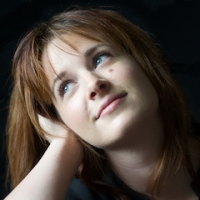
What can I do to get handstand? How do I do crow pose?
Can you show me how to do that handstand where your legs come up over your head?
Yoga teachers get a lot of questions like these from students. Many times, the student is a new one. They’ve seen a picture of someone, maybe even someone they know, on Instagram or Facebook in an incredible, beautiful pose and it has captured them.
They’re in. For that pose.
Ah, social media. These tools bring so many new opportunities for connection into modern life. If you’ve dabbled at all in the online yoga world, you may have come across one of the many “yoga challenges,” in which people post pictures of various advanced postures, usually a different one each day for a month. They can be really fun and empowering, as you watch all sorts of different people around the world try something new.
However, focusing on advanced postures is only accessing a teeny, tiny portion of the picture. And these pictures of advanced postures show only one fraction of a second of one individual’s yoga practice. It doesn’t show all the preparatory poses taken to build strength and flexibility. It doesn’t show the dozens of less-perfect versions of the pose that have been taken by that particular body over the weeks and months leading to this photograph.
That photograph isn’t yoga—it’s just a pose.
Because yoga is, first and foremost, a practice. It’s about the process. It’s something that we come to regularly.
And imperfection is a big part of that practice.
A body stepping on to the yoga mat for the first time is a mystery. Often this person will say they can’t touch their toes. To which I say, of course you can’t—you aren’t required to in your day-to-day life.
But the body also has other limitations that are completely unknown at the beginning. Everyone has areas that are weak and areas that are stronger than we realize—we all have different spots that are tight, and spots that are naturally flexible.
And from here you will begin. You will work with a teacher and a studio to learn your body, learn the ways you are already strong and flexible, and cultivate others. Yoga may show you that you tend to hunch your shoulders, and you will begin to unlearn that habit. You will start to realize how unevenly you use the muscles in, say, your hips, and the body will respond, showing you the domino effect of those tendencies. The first downward facing dog you do will feel strange and difficult, but eventually with time, without even realizing it, it will be your second home.
The truth is, the first time you try an arm balance, you’ll probably fall. And the second time. And maybe many more times after that. There’s no set number. It’s different for everyone.
You’ll fall until you’ve learned all the lessons you need to learn from falling. Falling isn’t failing. It’s forward progress.
The journey from beginner to advanced practitioner is long, intentionally so. In fact, most of us teaching are still journeying on that path. It takes a long time to learn your body, to discover its quirks and nuances. But along the way, just by showing up and practicing with the body you have been given, you will develop all you need to do the postures in your own time.
We would all like to sweep all of those less-than-perfect moments away and live life as it is on Instagram. Just take me straight to handstand, please. All soft light and flattering filters. No discomfort. But the uncomfortable places are where learning is happening.
You need all of the practice to prepare you for the big postures.
This is just one of the many places where yoga parallels life off of the mat. Our practice always has something to teach us. Think about your own habits on the mat and see if they apply to your life off of it. Are you afraid of falling? What does falling mean to you? Do you tend to shy away from things that make you uncomfortable? Do you try to hide all your less-than-perfect moments from others?
Or, has it become habit of yours to rush toward the ending?
To be perfectly clear, there’s nothing wrong with handstand, or crow pose, or any other advanced posture. There’s nothing wrong with pursuing excellence, on the mat or off. But let us not lose sight of the fact that it is just that, a pursuit. It’s about the journey toward the pose, not the pose itself.
Or, as Ashtanga founding father K. Pattabhi Jois said, “Practice. Practice. Practice. All is coming.”
May it be so.
Relephant:
The Most Beautiful Explanation of Why We Practice Yoga.
The Science Behind our Yoga Practice.
Author: Amy Thornley
Editor: Renée Picard
Photo: Courtesy of Author






Read 0 comments and reply